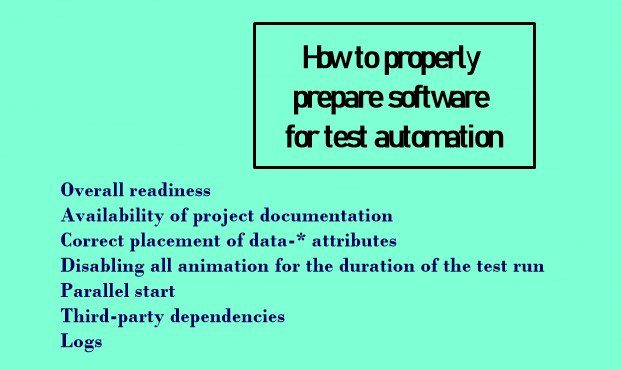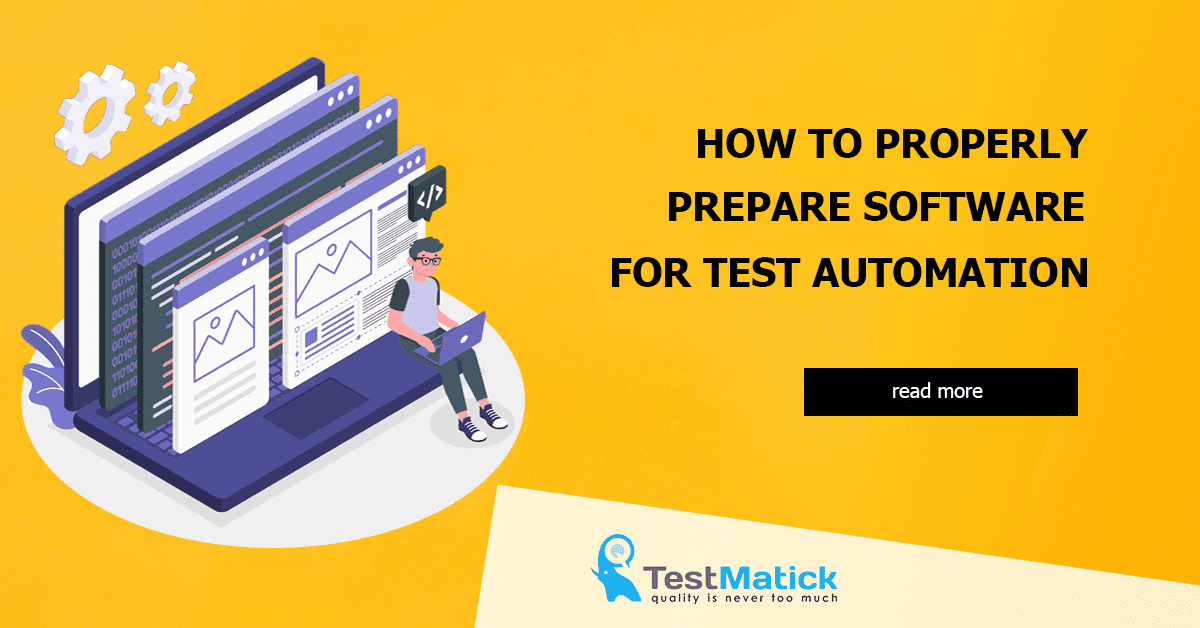Before you start performing automated testing, you need to make a short analysis of the software you are working with.
The more prepared for automation the product is, the fewer issues you’ll meet in the future while developing automated tests.Software testability is the main component of successful test automation. All automated tests based on it are created easier and more efficiently.
For example, if we talk about API – it’s public methods and while working with UI – it’s a common HTML page.
Further, we will analyze in detail the basics of how to prepare for this testing process.

Preparing Software for Test Automation
Step-by-step preparation of a product to automation
Stage 1: overall readiness
Sometimes automated software testing as a service starts very early and finally, a project department needs to work on monotonous rewriting.
To avoid such things from happening, it’s recommended to ask yourself about the readiness of main pages for automation, check if it’s correct to start work from here, and if logic or product displaying (layout) will change due to automation.
Stage 2: availability of project documentation
Project documentation helps to rapidly find required data on a project – for example, what resources are used for development of test information through API.
On the basis of client specifications, you can also generate any suites of automated tests and cover any part of software code with automated tests.
Stage 3: correct placement of data-* attributes
To decrease the number of failing and unstable tests and to easily find all elements in DOM, you should consider using stable locators.
If it’s a hard task for you to find the ones you need, you can analyze their priority here: About Queries | Testing Library (testing-library.com).
First, you need to pay attention to the locators that are the closest to a user (we mean here, first of all, accessibility).
Stage 4: disabling all animation during a test run
Sometimes there are some issues with animations during a test run – they prevent you from taking certain actions.
You can switch off such animation if it’s possible on a system level.
Stage 5: parallel start
When the number of automated tests increases, the time to make a test run increases too. You should use parallelization to solve this issue.
Parallel automation can be done in several ways, for example, through flows or parallel jobs.
By the way, you should be careful during parallel launch, to not miss possible crashes of an application and unexpected system defects that may appear.
Stage 6: third-party dependencies
You can always find some third-party dependencies while working with an architecture scheme.
It’s hard to monitor their behavior but it’s important to do this to not break the consistency of your tests.
Stage 7: logs
Logs are very helpful for analyzing the results of an automated test run. They (logs) help to understand the reasons why automated tests fail.
Software should contain clear logs stored in one place to easily attach them to a certain automated test.
Conclusion
If you follow all stages of building proper and efficient automation described above, functional testing of software will be much easier and you will finally get a web application that functions stably and properly.










Leave A Comment